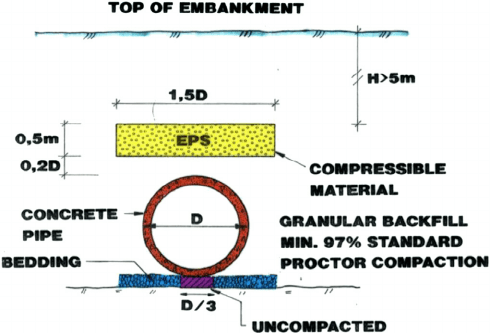GalileoG
Structural
- Feb 17, 2007
- 467
Hi,
I am designing a foundation wall with a strip footing located above an existing sewer. The footing is minimum 6 feet above the existing sewer (not allowed to go any closer).
As I do not want to add any load to the existing sewer, I am thinking about designing the wall to span over the sewer and place void form under the strip footing where it spans over the sewer.
Any advice on how to design this void form? I imagine I have to be careful not to over design it (designing it for more than the fresh weight of concrete) and that I have to somehow detail it to allow water to come in and disintegrate the void form without allowing soil to come in and close the gap and cause a load transfer.
Your thoughts please?
I am designing a foundation wall with a strip footing located above an existing sewer. The footing is minimum 6 feet above the existing sewer (not allowed to go any closer).
As I do not want to add any load to the existing sewer, I am thinking about designing the wall to span over the sewer and place void form under the strip footing where it spans over the sewer.
Any advice on how to design this void form? I imagine I have to be careful not to over design it (designing it for more than the fresh weight of concrete) and that I have to somehow detail it to allow water to come in and disintegrate the void form without allowing soil to come in and close the gap and cause a load transfer.
Your thoughts please?

